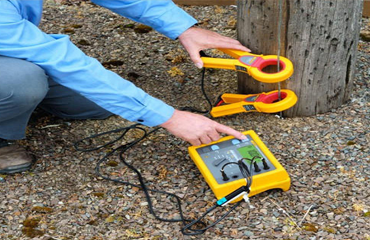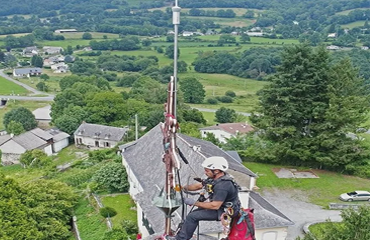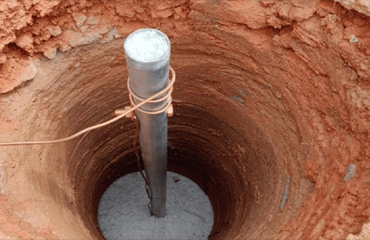Earth Resistance Testing, Lightning Protection System Audits, Testing, Commissioning, and Consultation Services
We are Services Provider of Earth Resistance Testing, Audit of Lightning Protection System, Installation, Testing & Commissioning , Comprehensive Consultation from Pune, Maharashtra, India
Earth Resistance Testing :
Soil resistivity is a measure of how much the soil resists or conducts electric current. It is a critical factor in design of systems that rely on passing current through the Earth's surface. An understanding of the soil resistivity and how it varies with depth in the soil is necessary to design the grounding system in an electrical substation, or for lightning conductors.
It is needed for design of grounding or earthing electrodes for substations and High-voltage direct current transmission systems. It was formerly important in earth-return telegraphy. It can also be a useful measure in agriculture as a proxy measurement for moisture content.

Audit of Lightning Protection System :

Lightning is an act of God which risks life and assets. One cannot avoid it. There is no known method of preventing the occurrence of natural phenomena such as a Lightning Strike / Flash / Discharge. The only way is to measure and manage the lightning risk.
The purpose of Lightning Protection System audit is to conduct lightning risk assessment and determine the level of protection required to the structure / facility as per the latest relevant standards.
LPS Adequacy audit helps to manage and mitigate the risk due to lightning and protect the life and assets.
Lightning Protection Adequacy Audit is needed to check the adequacy and healthiness of the existing LPS and its conformity to the latest standards in such a manner that prevents injury to personnel and property damage.
With the increase in Sensitive electrical equipments in the workspace, the need for protection against the dangers of Lightning has been increasing. Typically, Lightning Arrester Ratings is the discharge of static electricity within a cloud, between clouds or between cloud and the earth.
The Lightning Arrester Calculation currents vary from 20KA to 200KA.
A Lightning arrestor provides a means for the lightning to get discharged into respective earth pits or to the ground, leaving other conducting paths and structures. In this context, the employer shall install proper Lightning Protection System Design to avoid lightning risks or check whether the installed Air terminations are proportionate to protection required against lightning.
Installation, Testing & Commissioning :
Expertise is hard earned and when it comes to electrical safety systems of any variety it is important to have people who know what they are doing. Earthing Services engineers are often sought to oversee or intermittently audit the ongoing effectiveness of electrical earthing systems. Other times Earthing Services is required to validate the works that other companies have undertaken to ensure that it meets with the requirements of a design or specification.
Testing and commissioning services are generally required at the end of an installation project and in many instances where Earthing Services has provided design and specification services the company’s engineers return to site and ensure that performance has been achieved to enable a DNO to power or energise a site.
Earthing Services is a rarity in its thoroughness with this aspect of planning, but this contributes to the success the company enjoys in terms of its performance. Clients are safe in the knowledge that if Earthing Services engineers attend a site they are going to be trained, experienced, well-briefed, and focused on achieving the common goal of obtaining a useful, and meaningful certification for the site.

Comprehensive Consultation :

Commissioning of a new earthing system is essential as a validation step for the design and installation process and for the design inputs. In most cases commissioning should measure the outputs of the earthing system in terms of produced voltages and current distributions rather than solely resistance.
The commissioning should consider closely the key performance criteria identified in the hazard identification and treatment analysis phases.
The earthing system commissioning procedure normally consists of five core activities. In some instances, not all activities are required.
- Visual inspection
- Continuity testing
- Earth resistivity testing
- Injection testing
- Transfer, touch, and step voltage testing



